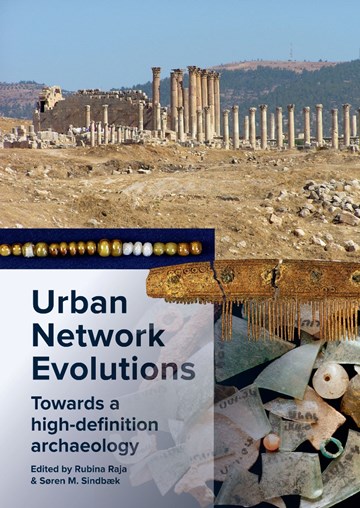Review of: R. Raja & S. M. Sindbæk (eds), Urban Network Evolutions. Towards a High-Definition Archaeology (Aarhus: Aarhus Universty Press)
Review in Bryn Mawr Classical Review by Matthew Selheimer (University of Leicester).

M. Selheimer. (2020). "Review of: Rubina Raja, Søren M. Sindbæk, Urban network evolutions: towards a high-definition archaeology. Aarhus: Aarhus University Press, 2018. 309 p.. ISBN 9788771846232", Bryn Mawr Classical Review 2020.05.12.
From the review (focusing on the chapter ‘Palmyra: The Urban Desert’):
"The chapter ‘Urbanizing the desert: Investigating the diversity of urban networks through the images of deceased Palmyrenes’ by Rubina Raja (the Director of UrbNet) provides an intriguing analysis of funerary data compiled by the Palmyra Portrait Project, begun in 2012. The aim of this project, according to the author, is to collect “all known funerary portraiture from Palmyra” (p. 75), which today is in many different collections. The author indicates, that, as of the writing of the chapter, more than 3,400 entries have been compiled (p. 76). After a short discussion of the urbanization of the city during the early Roman period in the 1st century BCE, the author shares preliminary insights from the project. For example, after noting that Palmyra was a bilingual city, Raja observes that the funerary monuments almost exclusively use the local dialect of Aramaic, and their style heavily emphasizes local dress and status symbols, such as Palmyrene jewelry and priesthood costumes. Additionally, the author discusses the prominent role of priests, who comprise roughly 25% of all male representations in Palmyrene funerary portraiture, and states this proportion is higher than what is typically found in other parts of the Roman world. The chapter concludes with a brief mention of female funerary depictions and the observation that women are represented in graves attributed to both husbands and fathers. While brief, this chapter provides an interesting introduction to the Palmyra Portrait Project, which is discussed further in the following chapters in this section, and the types of investigative analysis it can support. This chapter, and the project itself, will be of interest to classical scholars who study funerary monuments, religion in the provinces, and kinship relationships.
The second chapter in this section discusses the development of the Palmyra Portrait database, its structure, and use as a tool. Additional early research findings from the project are shared in a third chapter, such as the creation of the majority of the portraits during the 2nd and 3rd centuries CE, the introduction of sarcophagi and reliefs of sarcophagi in the 2ndcentury CE, the varying depiction of female figures over time, family groups wearing dress from different traditions (Palmyrene, Roman, and Parthian), and changes observed in the tools used to produce the portraiture. The final chapter in this section briefly reviews the types of tomb monuments found in Palmyra (tower, underground hypogea) with a discussion of a few examples. Collectively, the chapters in this section provide a good introduction and overview of recent scholarship on Roman funerary portraiture analysis in an important city on the eastern periphery of the Empire. They will be of interest to scholars of funerary analysis and Palmyra, specifically."
